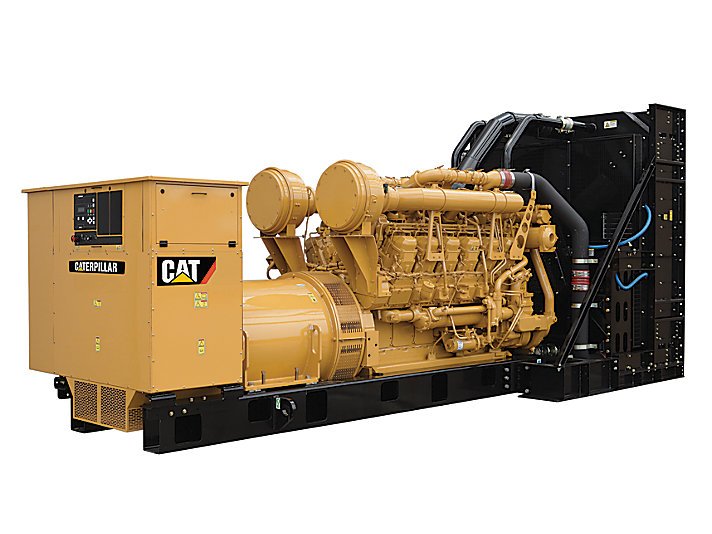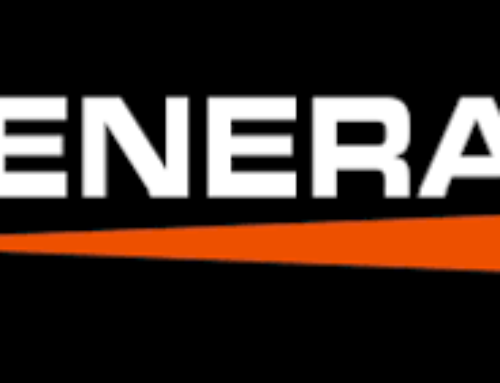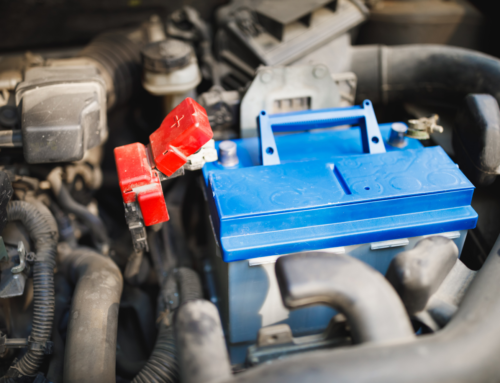A generator converts mechanical energy to electrical energy. You can use your generators in a multitude of applications including portable sources of power and backup power sources. To power the lights on a bicycle you can use small generators. And for very large ones supply the vast majority of energy to our electric power grids.
Generators run on diesel, gasoline, propane and even human energy. In spite of the varying sources of power, the principles of a large Caterpillar diesel generator is similar to a small generator. But how does a Generator Work to produce electricity?
How does a generator work? – The Basics
It may help to understand that generators don’t create electrical energy as much as it facilitates it. It does this through the electromagnetic principles first discovered by Michael Faraday in the early 1830’s. Faraday’s work was considered very important. It is said Albert Einstein kept a picture of him on a wall in his study.
Faraday found that by wrapping two insulated coils of wire around a ring made of iron and passing current through one of them, the current was inducted into the second coil of wire. This is the core principle of motors and generators to this day. This is electromagnetic induction.
How do the components of a generator set work together?
The components of a generator work together to convert mechanical energy into electricity. For the sake of simplicity, we are using an engine as the source of mechanical energy.
- The Engine: The more powerful the engine is in a generator, the more power it will produce. Larger generators functions run on diesel.
- The Alternator: The alternator includes a stationary component called the stator, and a second moving component called the rotor. It is the rotor that produces a rotating magnetic field in one of several ways. It usually depends on the size of the generator. Large generators, for example, produce the magnetic field by induction. Small generators may use a permanent magnet. Alternators may also use an exciter, powered by a small source of direct current (DC) using rings and brushes.
- Voltage Regulator: The voltage regulator regulates the voltage that the generator creates.
You should read detail about how components of diesel, ac, dc, electric and wind genererator set function.

Check More About: Used Generators For Sale
How do generators create or produce electricity?
With the engine creating mechanical power, the voltage regulator works with the alternator in a four-step cycle that continues to repeat itself until it reaches maximum power. First, the voltage regulator takes a small amount of AC voltage, then converts it to DC current which it sends to the secondary exciter windings of the stator. These secondary exciter windings, now mimic the primary stator windings, by producing an additional amount of AC voltage. There is a connection between the secondary exciter windings and rotating rectifiers. It converts the AC current from the windings to DC current, which is sent to the rotor. This creates an electromagnetic field which is a part of the existing rotating magnetic field of the rotor. The rotor induces this higher AC voltage across the windings of the stator, which, in turn, produces a higher amount of AC voltage from the generator.
The cycle continues until it reaches the maximum capacity of the generator. As its power increases the voltage regulator will produce less and less DC current. At optimum output, only enough generatio of DC current happens to keep it running at capacity. When the output decreases, the addition of a load happens. For example, the voltage regulator goes into action, once again creating the cycle to keep the power level at capacity. This will continue until the generator shuts down, either intentionally, through a lack of fuel, or perhaps a due to a mechanical breakdown.
Other Aspects of Large Generators
While the above addresses how a generator works, it does not include all of the components of a large generator such as a Caterpillar 3512C. Beyond the engine, alternator and voltage regulator, generators need a source of fuel, like a fuel tank along with a fuel system. The size of the fuel tank will dictate how long the generator will produce power before refueling. Large generators need a cooling system and a way to dissipate exhaust. A control panel makes the operation of a generator more simple, and a battery charger will keep your generator ready when needed. Generators are generally put on some type of frame suitable for its size. It is important to consider more than just power when deciding what generator is right for your particular application, and we can help.

Whether you are in search of a new diesel generator or a used diesel generator, we encourage you to contact us at Central States Diesel Generators. Whether it be for used Caterpillar 3412 generator or a new diesel generator, view our inventory and contact us with your questions. Get the power you need with the help of Central States Diesel Generators.
Check out our New Generator inventory
Frequently Asked Questions About How Generators Work
-
What precautions should you take while using a generator?
The toxic engine exhaust of a generator comprises carbon monoxide, a potent poison that can prove to be fatal. To protect yourself and others around you from the same, it is crucial that you place the generator in an open area, or in an area with ample ventilation.
Electric shock or electrocution is another potential risk. To avoid getting hurt by this, make sure that the generator is kept in a clean and dry place, and is not exposed to rain.
-
What happens when a generator is turned on?
When a generator is switched on, it uses the mechanical energy supplied by the fuel source, to force the movement of electric charges via an external electric circuit. Hence, it can be said, that the generator does not create electrical energy, but simply transforms mechanical energy into electrical energy!
-
What is the importance of Control Panel in a generator?
The Control Panel acts as the user interface of the generator. It offers provisions for all electrical outlets and controls. Some of the most important functions that control panel offer include –
- Electric start and shut-down
- Engine Gauges
- Generator Gauges
- Phase selector switch, frequency switch, and engine control switch
-
What would cause a generator not to produce power?
Loss of residual magnetism is the primary cause of a generator not producing power. This happens as a result of the non-use of the generator over a prolonged period of time. It can also happen when the generator is left on for a significantly long period of time without plugging anything into it.
Check More About: Generators for Sale at CSDG






![How to Leverage Remote Monitoring for Your Industrial Generator?[2024 guide]](https://csdieselgenerators.com/wp-content/uploads/2024/03/Remote-Monitoring-500x383.png)
